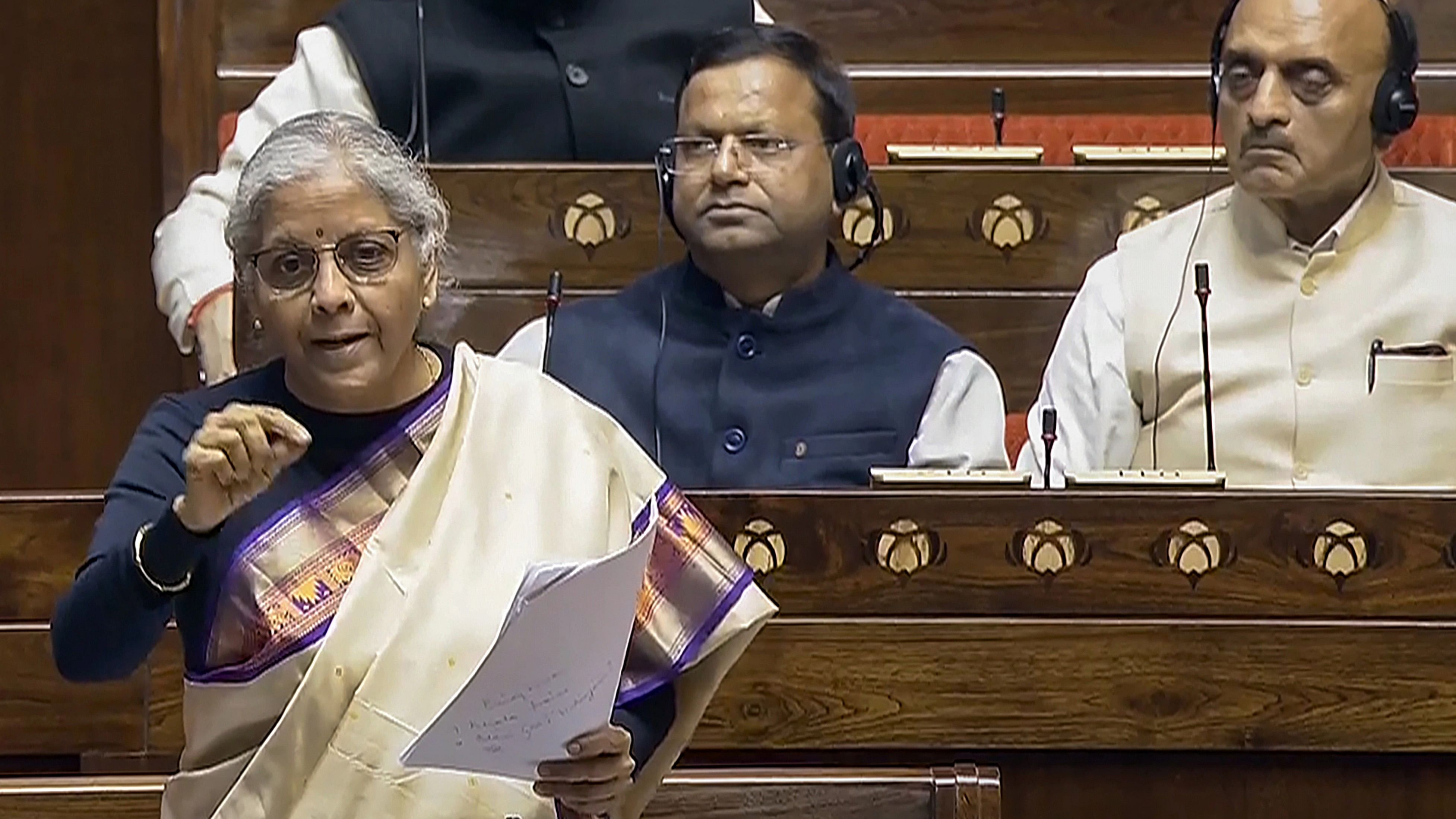
Union Finance Minister Nirmala Sitharaman speaks in the Rajya Sabha, Feb 8, 2024.
Credit: PTI Photo
New Delhi: Prime Minister Narendra Modi’s government on Thursday presented a ‘white paper’ in Parliament crediting itself for rescuing the Indian economy from a “state of crisis, despair and paralysis” for which it blamed its predecessor.
“When the NDA (National Democratic Alliance) government took over the reins in 2014, the economy was in bad shape, nay, crisis. We faced the hydra-headed challenge of fixing an economy mismanaged for a decade, and restoring its fundamentals to sound health,” noted the paper tabled by Union Finance Minister Nirmala Sitharaman.
Pulling no punches, the white paper said that UPA leadership, “which seldom fails to take credit for the 1991 reforms, abandoned them after coming to power in 2004”.
The paper, released weeks ahead of the Lok Sabha elections, presents comparison of key macro-economic data during the NDA government-led by Narendra Modi (2014-2024) with the erstwhile United Progressive Alliance (UPA) government led by Manmohan Singh (2004-14). Incidentally, the paper was tabled in Parliament on the day Singh’s Rajya Sabha tenure ended.
According to data presented in the paper, average annual inflation between the financial years 2013-14 and 2022-23 declined to 5% from 8.2% recorded during 2003-04 and 2013-14 period. The paper does not carry a similar comparison for GDP.
“To tackle the enduring challenge of high inflation inherited from the UPA government in 2014, our government strategically addressed the root cause of the problem by implementing responsible fiscal and monetary policies,” it said.
Criticising Manmohan Singh’s economic policies, the report noted that the “UPA government inherited a healthy economy ready for more reforms, but made it non-performing in its 10 years.”
It further added that the economic mismanagement choked the growth potential and India became a “fragile” economy.
Underlining the reasons for the white paper, the report, prepared by the Union Finance Ministry said, “Now that we have stabilised the economy and set it on a recovery and growth path, it is necessary to place in the public domain the seemingly insurmountable challenges – left behind as a legacy by the UPA government.”
“The progress achieved in the ten years of our government has overcome the malaise and paralysis of the previous ten years of the UPA government. In 2024, confidence and purpose have replaced the diffidence and drift of 2014,” it said.
R Dinesh, president of industry body CII said the optimism of the white paper on the economic growth prospects captures the pulse of the industry members.
“With its inherent resilience and the enabling structural reform measures announced in the last decade, we are confident that the Indian economy will be able to reach the $7 trillion GDP mark before 2030,” Dinesh said.